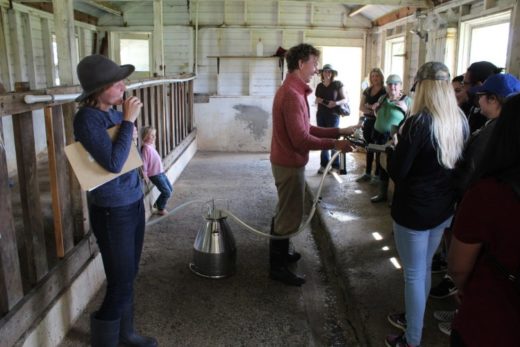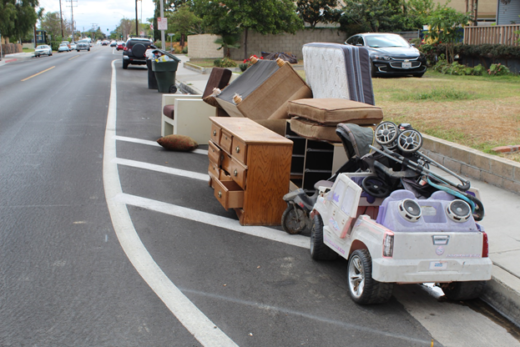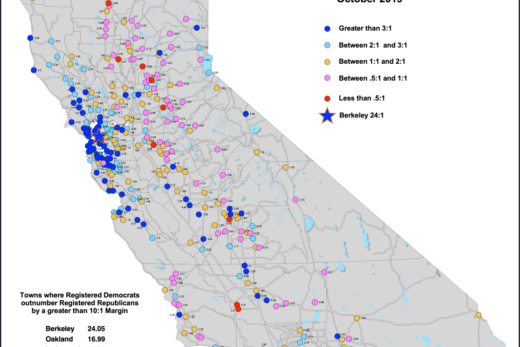Bicycle friendly communities are spreading across California for many good reasons, exploding our car culture stereotypes and connecting us to our diverse neighborhoods.

Peddling Positive Pedaling
A few decades ago, I started biking more frequently on our streets, rather than limiting my rides to the obligatory designated (and iconic) routes, such as over and around the Golden Gate Bridge or along river routes and beach paths. Immediate benefits included the added physical exercise, beating the traffic gridlock monster, and not having to worry about the price of gas or parking. We bicyclists also recognize how we can cover far more distance than on foot, while still observing, sensing, and discovering connections between our surrounding neighborhoods and environments. This helps explain why Geographer Pete Morris led the bicycle commuting charge to our college so many years ago, and why Geographer Jing Liu continues to champion such clean and healthy transportation traditions today, and why Sustainability Manager Ferris Kawar discarded his car for his bike.
When my night class was moved to our Bundy campus, I often pedaled there from our main campus in about 15 minutes, a rush “hours” route that had become a frustrating 25-minute gridlock crawl by car. Some of my students would arrive in class announcing, “Hey, Selby, I saw you on your bike, passing me in my (nearly stationary) car on the way to class.” More students (and some faculty) began showing up on their bikes as the years passed until the majority of commuters to the college were arriving on foot, or by bike, bus, or carpool. Talk about positive PR: you can imagine how this pleased surrounding neighbors concerned about traffic congestion. We can thank organizations such as Sustainable Works for propagating such positive transportation ripples across our communities.


Nurturing Healthier People and Communities
Creating urban landscapes that are safer and more convenient for bicyclists requires patience and long-term commitments. It took several years for our city and some other California cities to establish safer bicycle routes along key streets. But those of us who served as advisors on city committees and task forces remained persistent. As more people pedaled their way along, drivers learned to look out for bicycle riders at every turn, which made riding safer for everyone. You can also thank riders for cutting traffic volume and air pollution so that we can all enjoy more efficient, cleaner, and safer living and working environments. As with any other physical activity, there are always safety concerns, but the quality of our lives and our urban environments noticeably improves when a threshold number of folks get out of their cars and on to their bikes.
This is why, in their efforts to make our cities more functional and livable, leaders across the Golden State are making our streets more bicycle friendly. Some northern California cities have long been recognized as national leaders. Davis, boosted by their UC, may be our small city poster child. But Sacramento (beyond their cherished river routes), San Francisco (cheered on by assertive bicycle enthusiasts that have overcome narrow streets on steep hills), and Oakland shine among NoCal’s big city leaders. And folks might be surprised to learn how so many southern California cities, helped along by some of the mildest climates in the world, have also caught a spreading bicycle fever. The best way to explore Santa Barbara’s classic Mediterranean natural and cultural landscapes is along their convenient bike paths. The San Diego area (SANDAG) has committed hundreds of millions of dollars over the next few decades to extend their safe bicycle routes. Long Beach is among a host of southern California cities that sponsor tours, festivals, and other events to celebrate bicycle cultures. Irvine has earned a Silver Level Bicycle Friendly Community rating as it boasts “one of the nation’s most interconnected and well-maintained bicycle systems.” Still, the enthusiasm is sometimes met with skepticism (such as in San Diego) from those who fear change and others who balk at the high costs of transforming well-established car-dominated streetscapes.

Opening Car-free Streets
Though the traffic gridlock and car addiction culture stereotypes may continue to haunt especially southern California, positive change is in the air. For example, open streets events have spread across the Golden State to encourage safer bicycle cultures, and the L.A. area may be leading that charge. Enter CicLAvia. More than 1.8 million people have enjoyed these events that evolve into festivals celebrating our communities and our connections. In their own words, “CicLAvia is a 501(c)(3) non-profit that catalyzes vibrant public spaces, active transportation, and good health through car-free streets. CicLAvia engages with people to transform our relationship with our communities and with each other.” Since 2010, up to 249 miles of selected and connected streets in neighborhoods across L.A. County have been open for one weekend day to walking, skating, and bicycling without interference or threats from vehicles. These car-free events have done more than encourage local and regional transportation and air quality improvements; they have introduced us to one another as we explore the most culturally diverse county in the world. You are invited to join me on our bicycle adventures through some of these neighborhoods at several CicLAvia and other car-free bicycle events during just one year. Put on your virtual bicycle helmets, follow the images, and enjoy the ride.
Should the following images of our adventures inspire you to learn more, you might visit the League of American Bicyclists or go to CATSIP’s California Bicycle Friendly Communities page to search through the communities, businesses, and universities that are pedaling us into the future: http://catsip.berkeley.edu/node/35
To learn more about CicLAvia: https://www.ciclavia.org/about
If you are looking around L.A. County for bike lanes and safer bike routes, Geographer and bicyclist Jing Liu suggests this excellent Metro map. To get details, zoom in to the neighborhood that interests you most: https://media.metro.net/dcr/bikemap/metro_bikemap.html
Beyond L.A. County and all around our Golden State: https://www.calbike.org/go_for_a_ride/map_routes/
You can also visit your local bicycle shop or inquire about bicycle social groups and bike maintenance classes in your area.
Before going out there, cruise through the following images, which are organized into individual car-free streets events in southern California, all celebrated just during the last year. Each event appears on its own separate page.




